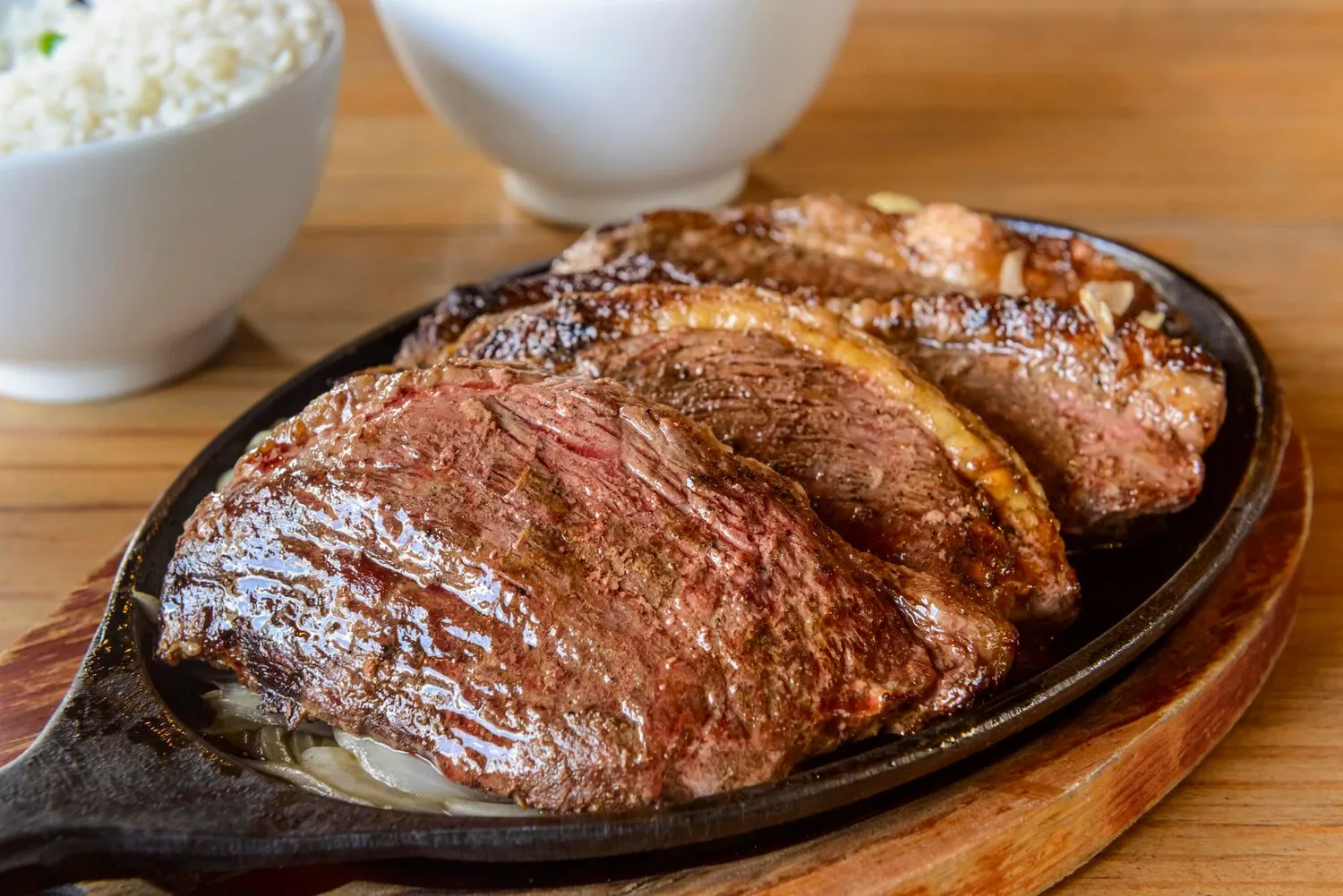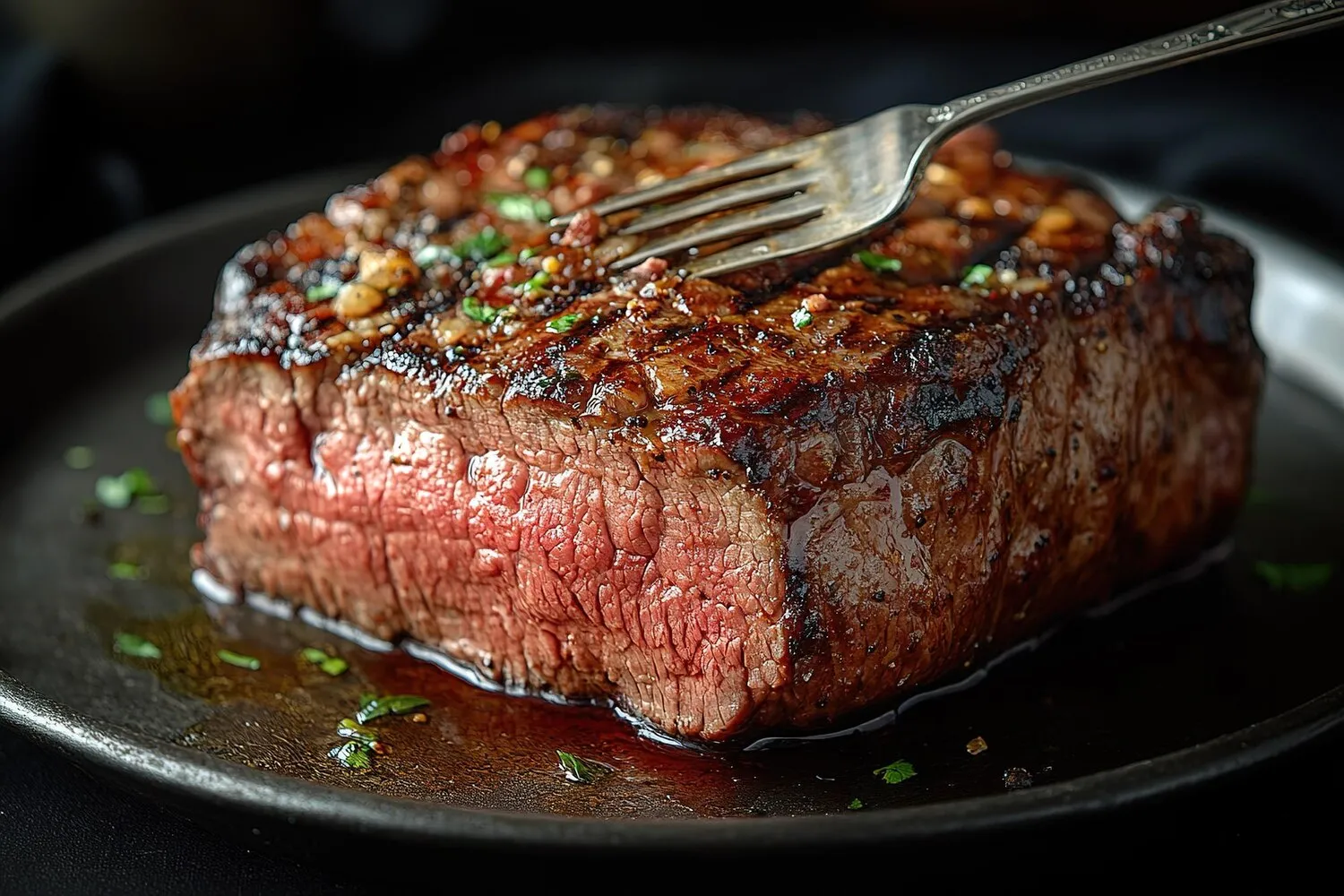
Carne a la Llanera
Grilled beef prepared in the traditional Llanos style, often marinated and cooked over an open flame. It's usually served with yuca, plantain, and guascas sauce.
Nutrition Facts
* The % Daily Value (DV) tells you how much a nutrient in a serving of food contributes to a daily diet. 2,000 calories a day is used for general nutrition advice.
Carne a la Llanera emerged from the vast cattle ranches of the Llanos Orientales region of Colombia and Venezuela. Its origins are deeply tied to the gaucho (llanero) culture and the necessity of efficiently preparing large quantities of beef to feed communities during cattle drives and gatherings. The simple cooking method reflects the available resources and lifestyle of the Llanos.
Carne a la Llanera is more than just a meal; it's a symbol of the Llanos culture, embodying its traditions of cattle ranching, community, and resourcefulness. It represents the spirit of the llaneros and their connection to the land.
Community Feast
Carne a la Llanera is often prepared for large gatherings, festivals, and family celebrations, reinforcing communal bonds and sharing traditions. It's a dish that brings people together.
Llanero Identity
The dish is intrinsically linked to the llanero identity, representing their self-sufficiency, horsemanship, and resilience. It's a culinary emblem of their unique way of life.
Traditional Cooking Methods
The preparation of Carne a la Llanera remains largely unchanged over generations, preserving traditional cooking techniques and passing down knowledge within families. The use of specific types of wood for the fire is also a key element.
Carne a la Llanera is characterized by its savory, smoky, and beef-forward flavors. The marinade, though simple, enhances the natural taste of the meat, while the open-flame grilling imparts a distinct smoky aroma.
The primary flavor profile is robust and beefy. The marinade typically consists of salt, sometimes with the addition of garlic, onions, or beer depending on the region and individual preferences. The open-fire grilling using wood (often dried tree branches) provides a smoky undertone that complements the savory meat. The accompaniments, such as yuca, plantains, and guascas sauce, add textural and flavor contrast, offering starchy sweetness and herbaceous notes, respectively.
Meat Selection
Select tougher cuts of beef like flank steak (sobrebarriga) or thin skirt steak (falda). The long cooking time will tenderize these cuts.
Marinade Simplicity
Keep the marinade simple. The best Carne a la Llanera relies on the quality of the beef and the flavor imparted by the wood smoke. Salt and perhaps a touch of garlic are often all that's needed.
Slow and Steady Grilling
Cook the meat slowly over medium heat. Rotate the meat frequently to ensure even cooking and prevent burning. The cooking process can take several hours.
Wood Selection
Use hardwood that produces a clean, flavorful smoke. Guava wood is a popular choice in the Llanos.
Accompaniments Matter
Serve with traditional accompaniments like yuca sancochada (boiled yuca), plátano maduro asado (grilled ripe plantains), and ají de guascas (guascas sauce). These elements complete the authentic flavor profile.
Explore additional Grilled dishes and restaurants
Explore GrilledDiscover top dining spots and culinary experiences in Barrancabermeja.
Explore BarrancabermejaLearn more about the food culture, restaurant scene, and culinary heritage of Colombia.
Explore Colombia
